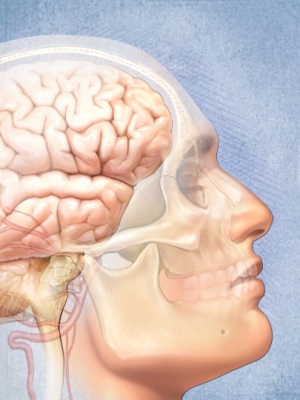Borderline Personality Disorder
Description of borderline personality disorder
Borderline Personality Disorder (Pearl) It is a complex and confusing illness. People with borderline personality disorder may have unstable moods, the complexity of interpersonal relationships, self-esteem and behavior. They often act impulsively. This behavior disrupts family and work life, long-term planning and feelings to yourself. People with borderline personality disorder as difficult to control your mood.
Most people, suffering from borderline personality disorder is very difficult to be away from family and friends, and they desperately try to avoid loneliness. In severe cases,, suffering from borderline personality disorder may find protection from the inner pain, causing himself injury (cuts, scratch).
Psychotherapy and taking medicines helps improve the condition of patients, stradaющih RIE.

Causes of Borderline Personality Disorder
Causes of BPD are not fully understood. As scientists believe, a role played by the chemical reactions of the brain, Genetics and environmental factors. People, who develop BPD, probably, born vulnerable to the illness. When faced with certain conditions of the environment and stress, It increases the likelihood of BPD. Most people suffer BPD, have undergone the experience of childhood abuse, physical or sexual violence.
Risk factors for borderline personality disorder
Factors, which increases the risk of borderline personality disorder:
- Paul: female;
- The experience of abuse, neglect as a child;
- The history of sexual or physical abuse;
- The inherent sensitivity to stress;
- Low self-esteem;
- Mother, father, or brother with borderline personality disorder.
Symptoms of borderline personality disorder
Symptoms of borderline personality disorder are different. People with borderline personality disorder, usually, very sensitive to deviations. They can respond even to a short lack of friends or family members. Symptoms are often exacerbated, when people with BPD feel isolated and lonely, or during stress.
Features, that are common to individuals with borderline personality disorder include:
- Fear of being alone;
- Severe mood swings and difficulty of controlling emotions;
- Difficulties in relationships;
- Unstable self-esteem;
- Impulysivnoe behavior:
- Licentiousness, risky sexual behavior;
- Gambling;
- Drug and alcohol abuse;
- Self-inflicted, threat of suicide;
- Gluttony;
- The feeling of emptiness and boredom;
- The use of protective mechanisms, to avoid responsibility for the conduct of, or to blame others;
- Unpredictable mood and difficulty of management;
- Periods of anger, often intense, uncontrolled and unjustified;
- Episodes (usually accelerated by the presence of stress) intense paranoia, dissociation, or thinking, bordering on psychosis (hence the term “border”).
Diagnosis of borderline personality disorder
The doctor will ask in symptoms and medical history and perform a physical exam, to rule out other possible causes for mood and behavior problems. If it is suspected BPD, You need to be examined by a psychiatrist, who specializes in personality disorders.
BPD can affect anyone, but it is usually diagnosed in adolescents and young adults. BPD more often found in women, than men. A diagnosis of BPD may be raised, If a person has a history of unstable interpersonal relationships, low self-esteem, severe impulsivity, along with some specific symptoms of BPD, listed above. Besides, BPD patients almost always have other mental health problems, including:
- Depression;
- Substance abuse;
- Eating Disorders;
- Anxiety disorders;
- Bipolar disorder;
- Uncontrollable costs, gambling or risky sexual behavior.
Treatment of borderline personality disorder
Treatment options include the following:
Psychotherapy
Individual, group and family therapy is the mainstay of treatment for BPD. Individual psychotherapy usually consists of 2-3 sessions per week for a year. Dialekticheskaya povedencheskaya therapy (DPT) It is a type of cognitive behavioral therapy, which is effective in people with borderline personality disorder. It can be a part of group therapy. The goal of therapy – to help a person with borderline personality disorder:
- Understand his or her behavior;
- Improve his or her ability to tolerate frustration, alarm, loneliness, and anger;
- Manage impulsive behavior;
- Improving social skills.
Family therapy can help family members cope with the effects of BPD and provide support to the patient.
Medicines
For the treatment of depression and mood swings can be used antidepressants and mood stabilizers. At lower doses can be used antipsychotics, to control distorted thinking or anxiety.
Prevention of borderline personality disorder
There are no methods for the prevention of borderline personality disorder. Studies are under way, aimed at identifying the most effective treatment and control, allowing to change the course of the disease.
